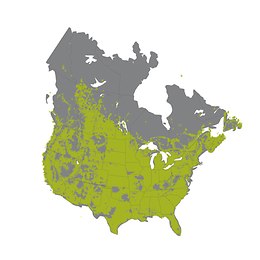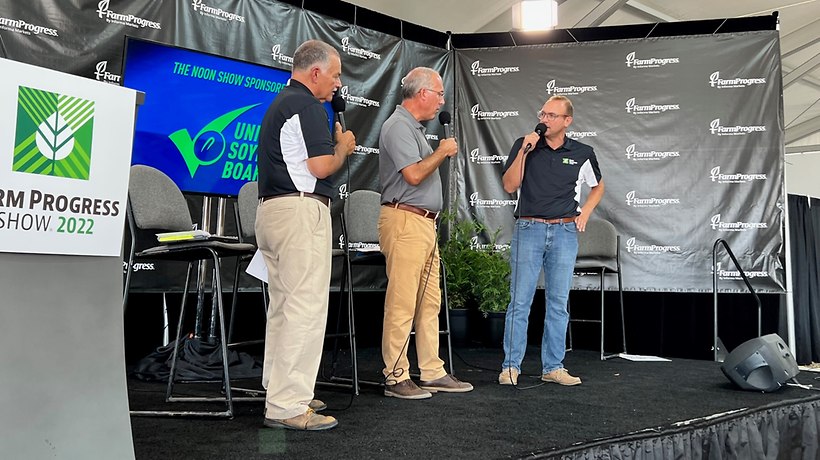

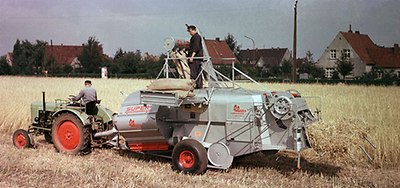
CLAAS Combines: Coming to America Part 1
Learn about our "colorful" past!
For more than a century, CLAAS has been a technological innovator in harvesting equipment. Starting out with hay baling equipment, and shortly thereafter developing one of the first pull-type combines, CLAAS has been an industry leader even before most Americans knew that CLAAS existed.
Big Deal with Ford
Aside from a few machines making their way across the big pond in the fifties and early sixties, CLAAS made its first major appearance in North America in 1965. At that time, a contract was signed with Ford Tractor Operations for the exclusive distribution of CLAAS combine harvesters through the Ford agricultural machinery dealer network. CLAAS recognized Ford, a large Ag company lacking its own combine harvester production, as the ideal partner for distribution into North America and Mexico. Meanwhile, Ford saw the European market leader in combine harvesters as the perfect complement to their own portfolio with innovative, powerful and reliable machines.
The CLAAS SENATOR became the Ford 640, the MERCATOR the Type 630, and the CONSUL the Type 620, until it evolved into the Type 622 from 1971 forward. The DO 85, launched in the late 1960s, was sold as the Ford 642. In the 20 years of cooperation between 1965 and 1986, CLAAS combines in North America were sold in the blue and white color scheme with a Ford badge.
Documents from the time provide concrete figures: from 1966/67 to 1969/70 a total of 1,588 units of the Ford 620, 630 and 630 were delivered, from 1969/70 to 1978/79 the DO 85 production was 2,010 units made for North America.
More Colors.
In 1979, CLAAS founded its own marketing and sales company in Troy, Michigan - which was relocated to Columbus, Indiana, two years later. In areas not covered by the Ford dealer network, CLAAS began selling small quantities of seed-green DOMINATOR combines through their own network, including the new CS top models. This two-brand strategy lasted until 1986, when Ford acquired a plant from a different manufacturer.
At the end of the 1980s, a new agreement took place between CLAAS and the world's largest construction equipment manufacturer, Caterpillar. CAT, who launched their pioneering Challenger rubber track tractor at the time, wanted to expand their crawler concept to other areas of agricultural engineering. In addition to trailers, large combine harvesters were likely candidates - which led to the CLAAS COMMANDOR with crawler tracks. This was the starting point for the CLAAS TERRA TRAC success story.
And more colors.
While still collaborating with Caterpillar, CLAAS entered into an agreement with Massey Ferguson to distribute the DOMINATOR 98 and DOMINATOR 108 walker combines in the United States and Canada. Massey had discontinued the production of its own walker machines in North America and focused on the development of rotor combines. Then, in 1990, Massey Ferguson took over the Dronningborg plant in Denmark, which brought straw walker technology back into the portfolio. The joint venture with CLAAS ended in 1995 after approximately 200 machines had been built in Massey Ferguson red using Massey’s own type designations.
Want to learn what happened next? Check out "CLAAS Combines: Coming to America -- Part 2" coming later this fall!
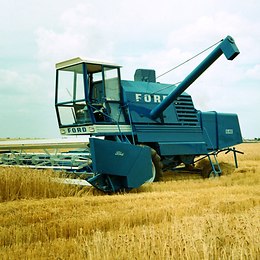
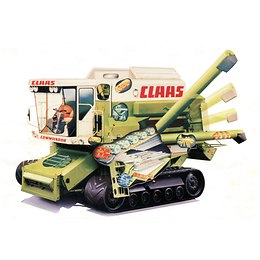
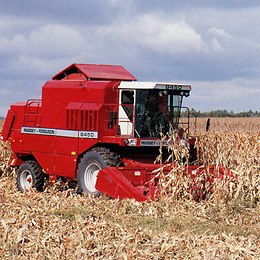
Event calendar
-
DateEvent
-
Jul 25, 2024 - Jul 25, 2024Baltic, SD
-
Aug 27, 2024 - Aug 29, 2024Boone, IA
-
Jul 16, 2024 - Jul 18, 2024Saskatoon, Saskatchewan


